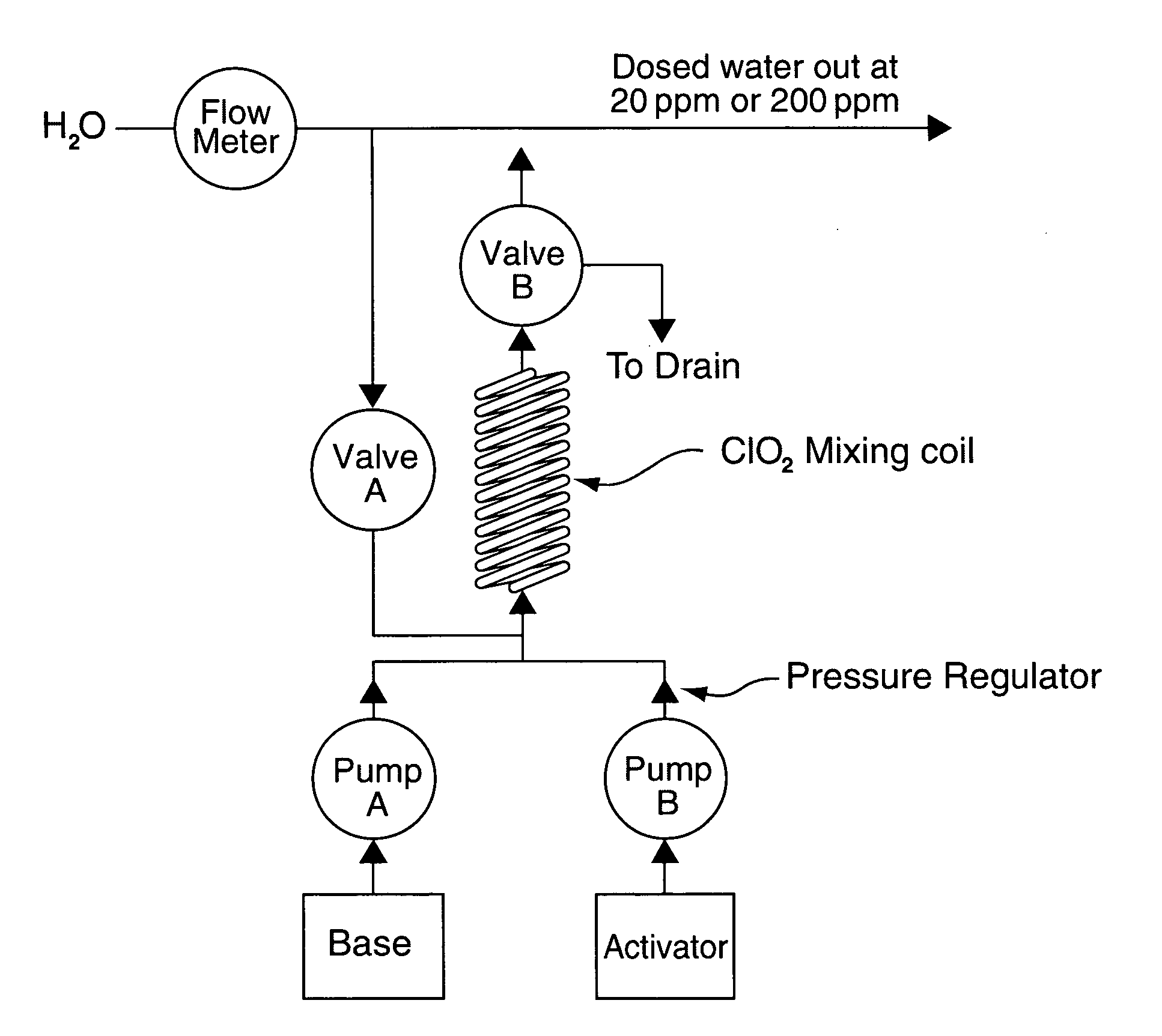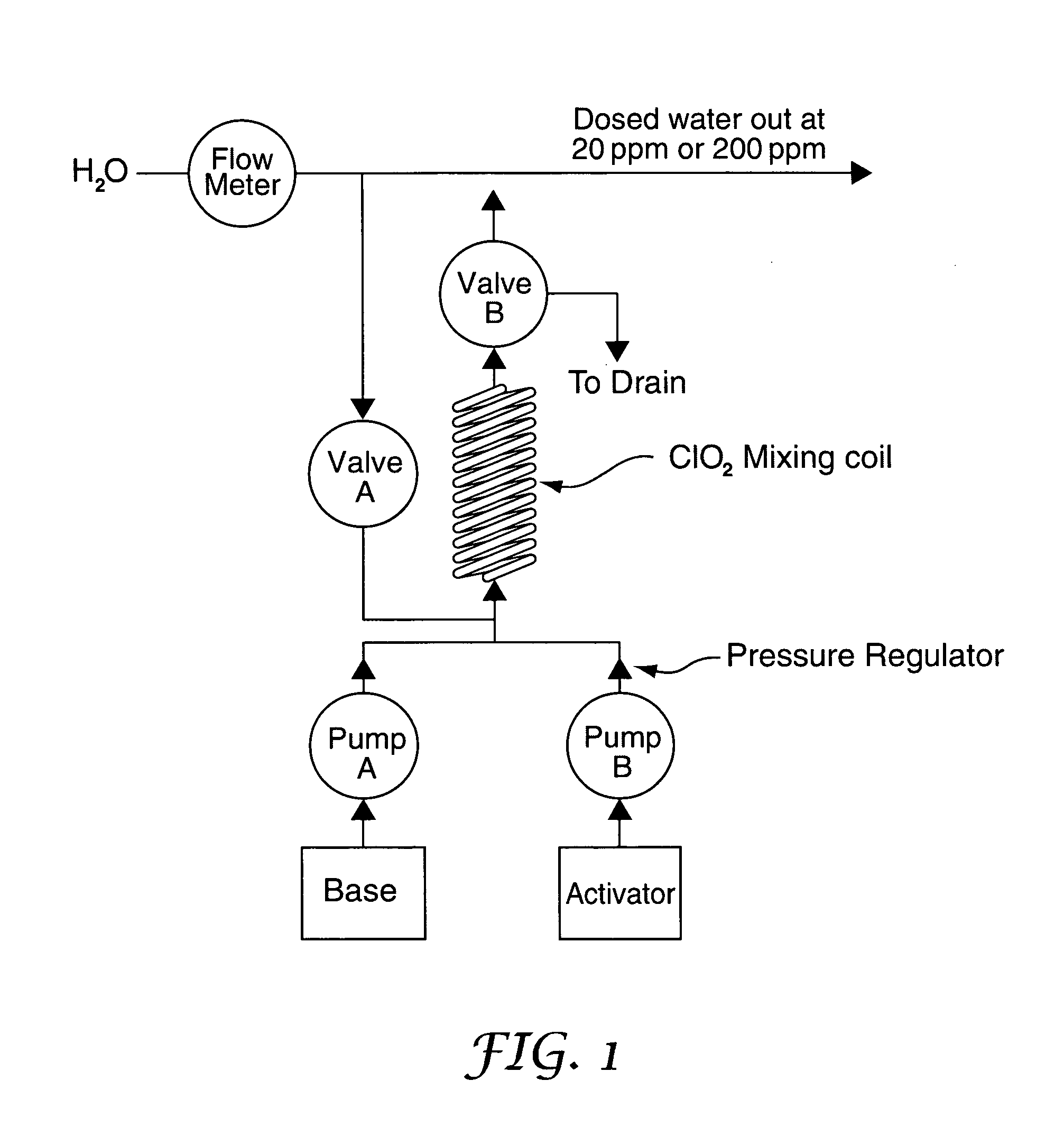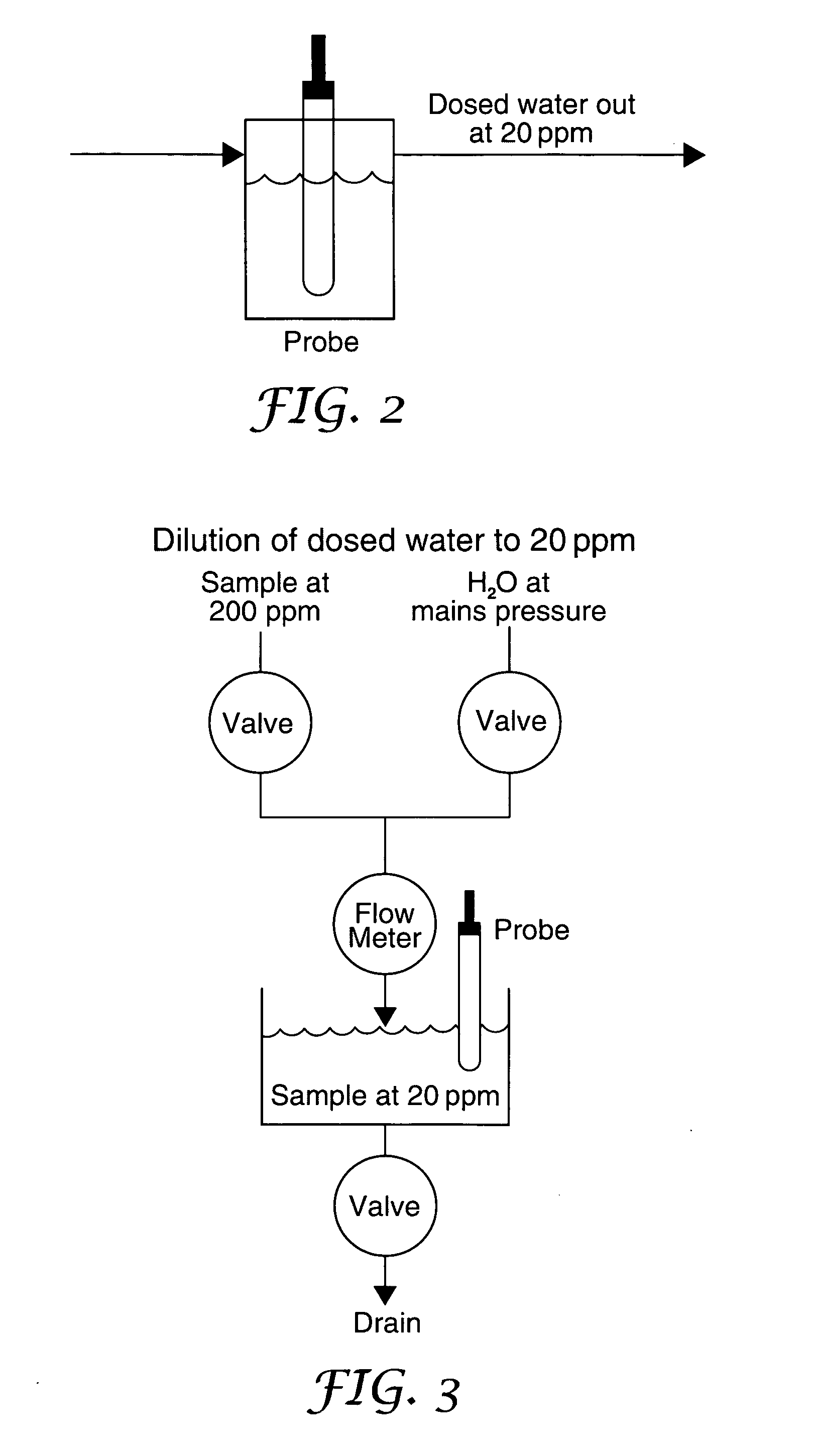Chlorine dioxide generation
- Summary
- Abstract
- Description
- Claims
- Application Information
AI Technical Summary
Benefits of technology
Problems solved by technology
Method used
Image
Examples
example 1
[0062] The washer needs 40 ml of ClO2 solution from the mixing coil to dose the rinse water of the 15 litre sink at the rate of 40 ml / minute. Base and Activator are injected into the base of the mixing coil by the two pumps. The internal volume of the coil is 20 ml. It takes 30 seconds for the Base and Activator to fill the coil. During the 30 seconds the Base and Activator are thoroughly mixed and ClO2 is produced. The Base and Activator pump continue to push the 20 ml packet of ClO2 out of the mixing coil and into the water line at 400 kPa at the demand rate of 40 ml / minute. At the end of the delivery cycle the mixing coil is still full of ClO2. Software control may be used to determine whether to hold this ClO2 in the coil, because there is an expectation that another batch will be required in a pre-determined period, or whether to flush it out using Base or water.
example 2
[0063] The washer needs 160 ml of ClO2 solution to dose both chambers of a washer disinfection machine at the rate of 40 ml / minute. We proceed exactly as Example 1 above but continue to mix and pump ClO2 at the rate of 40 ml / minute until 160 ml of ClO2 has been dispensed into the water supply. At the end of the delivery cycle the mixing coil can be flushed with Base or water or the ClO2 retained as required.
Verification of ClO2 Concentration Using Probe Technology
[0064] Probes exist to measure ClO2 concentrations in the range 1-20 ppm. Such a probe may be located in the sterilizing fluid stream and used to check that the correct concentration of ClO2 is being generated for an application such as wound irrigation. However probes for measurement of ClO2 in higher concentrations, for example in the range 100-200 ppm, tend to have limited lifetimes. As an alternative to using such higher concentration probes, a 1-20 ppm probe may be used to verify ClO2 concentrations in all applicati...
PUM
 Login to View More
Login to View More Abstract
Description
Claims
Application Information
 Login to View More
Login to View More - R&D
- Intellectual Property
- Life Sciences
- Materials
- Tech Scout
- Unparalleled Data Quality
- Higher Quality Content
- 60% Fewer Hallucinations
Browse by: Latest US Patents, China's latest patents, Technical Efficacy Thesaurus, Application Domain, Technology Topic, Popular Technical Reports.
© 2025 PatSnap. All rights reserved.Legal|Privacy policy|Modern Slavery Act Transparency Statement|Sitemap|About US| Contact US: help@patsnap.com



